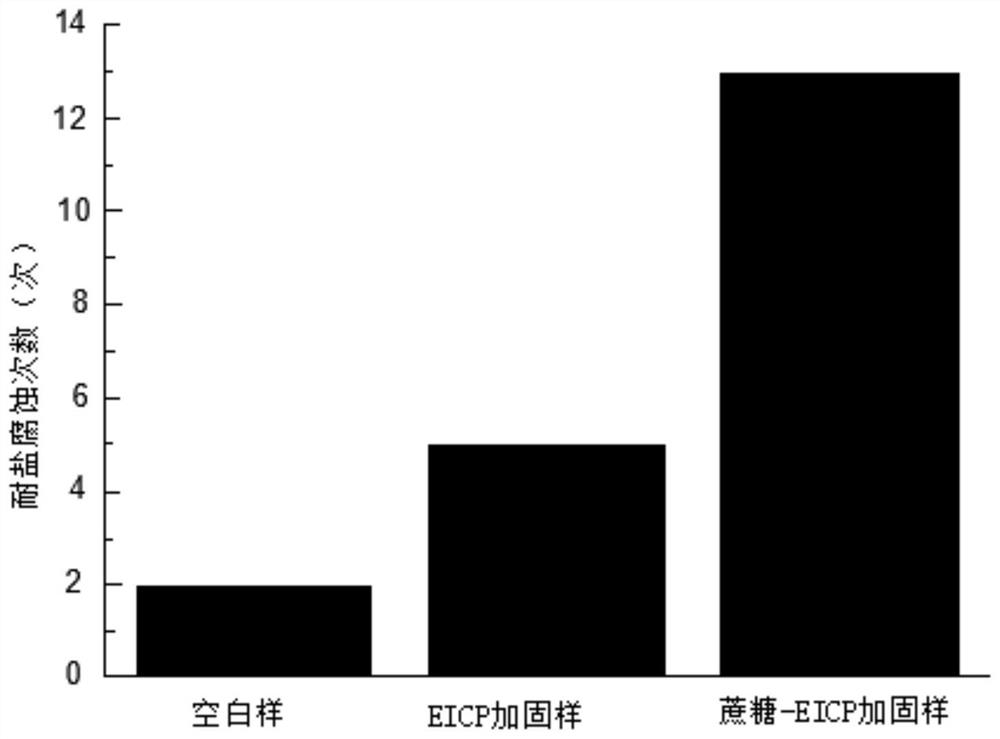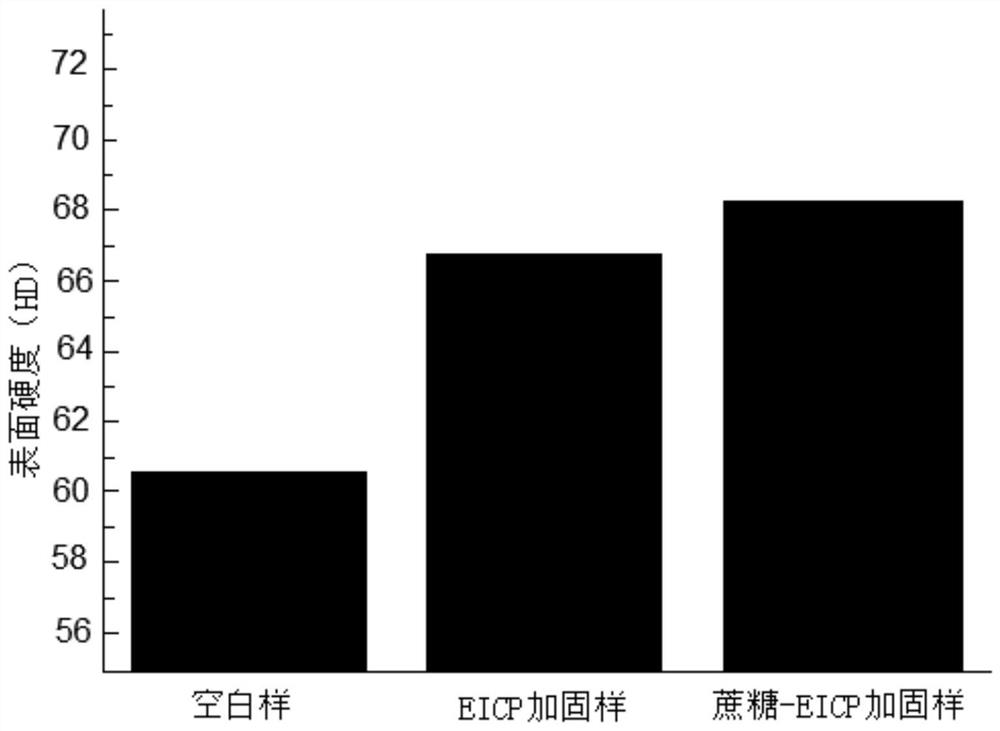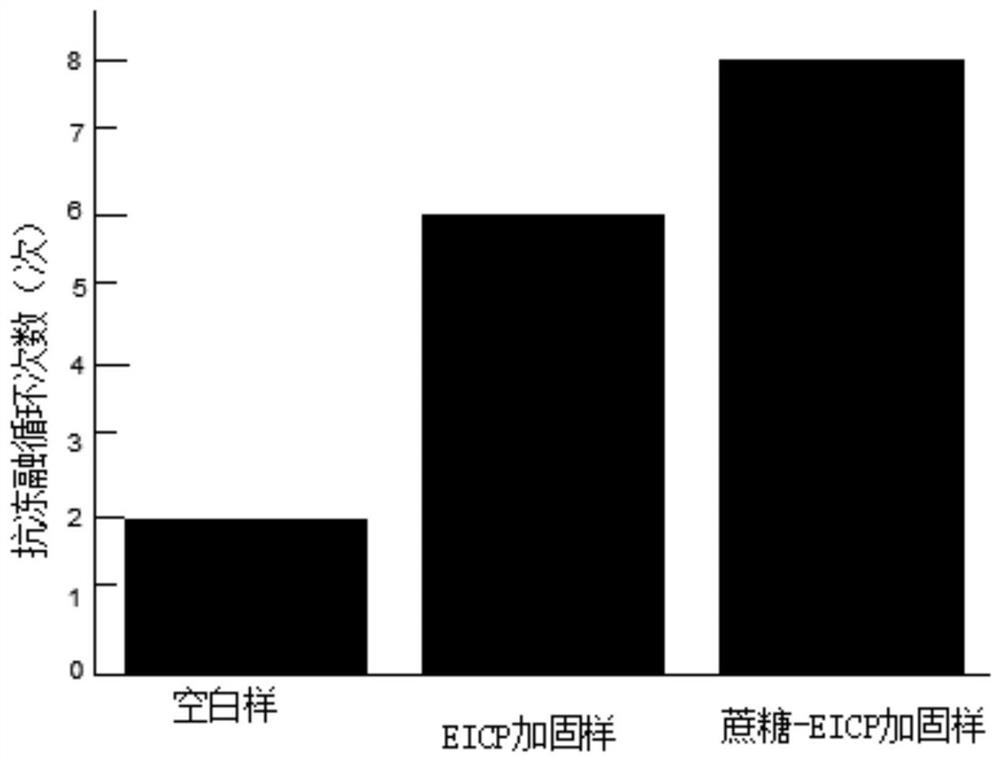Earthen archaeological site protection material and preparation method thereof
A technology for protecting materials and soil sites, applied in the field of soil site protection materials and their preparation, can solve the problems of incompatibility between materials and soil sites, unsatisfactory reinforcement effect, limited protection time, etc. The protection effect is improved and the effect of avoiding weathering damage
- Summary
- Abstract
- Description
- Claims
- Application Information
AI Technical Summary
Problems solved by technology
Method used
Image
Examples
preparation example Construction
[0022] A method for preparing earthen site protection materials, comprising the steps of:
[0023] 1) Grinding the dried soybeans with a grinder, and passing the crushed soybean powder through a 100-140 mesh steel sieve;
[0024] 2) adding the sieved soybean powder obtained in step 1) into distilled water to prepare a solution with a soybean powder concentration of 50-70 g / L, and placing the solution in a conical flask to seal;
[0025] 3) Place the soy flour solution obtained in step 2) in a gyratory shaker for 2.5-3.5 hours, then refrigerate in a refrigerator for 0.8-1.2 hours;
[0026] 4) Use a centrifuge to centrifuge the soy flour solution after standing, the centrifugal speed is 4000-5000r / min, the centrifugation time is 12-17min, and the obtained supernatant is the urease solution;
[0027] 5) the urease solution obtained in step 4) is mixed with urea solution, calcium chloride solution and sucrose according to a mass ratio of 10:5:5:1 to obtain the protection material...
Embodiment
[0030] Taking the traditional sanhe soil site in my country as an example, a batch of traditional sanhe soil samples were prepared. The preparation process is as follows:
[0031] 1) Crush the clay, soak it in water, remove floating impurities on the water surface, change the water every day until the pH value of the aqueous solution is neutral, air-dry the soil naturally, crush the air-dried clay, and pass through a 35-mesh sieve to obtain the experimental soil;
[0032] 2) Pass the sand through 18-mesh and 35-mesh sieves in turn, and take the intermediate sand samples of 18 and 35 mesh sieves as the sand for experiment;
[0033] 3) Mix lime, clay and sand according to the volume ratio of 1:2:4, add distilled water, stir and mix thoroughly, so that the moisture content of the soil sample is 16% to 18%, and use a tamping rod on a 40mm×40mm×40mm steel The mold was made to tamp the soil sample, and then the mold was demoulded to obtain a composite soil sample.
[0034] The trad...
PUM
| Property | Measurement | Unit |
|---|---|---|
| concentration | aaaaa | aaaaa |
Abstract
Description
Claims
Application Information
 Login to View More
Login to View More - R&D
- Intellectual Property
- Life Sciences
- Materials
- Tech Scout
- Unparalleled Data Quality
- Higher Quality Content
- 60% Fewer Hallucinations
Browse by: Latest US Patents, China's latest patents, Technical Efficacy Thesaurus, Application Domain, Technology Topic, Popular Technical Reports.
© 2025 PatSnap. All rights reserved.Legal|Privacy policy|Modern Slavery Act Transparency Statement|Sitemap|About US| Contact US: help@patsnap.com



